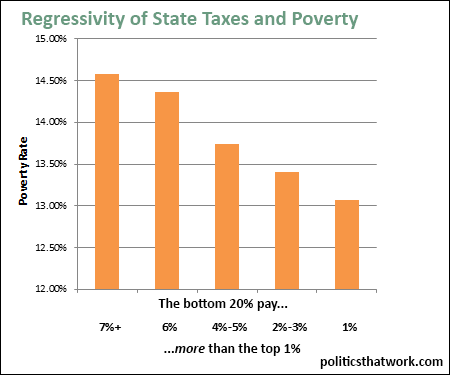
Description: This chart shows the percentage of the populations of states that are in poverty grouped by how regressive each states' taxes are. In the states in the left column, people in the bottom 20% for income pay between 7% and 14.4% more of their income to state and local taxes than the people in the top 1% do. In the states in the second column from the left, people in the bottom 20% pay between 6% and 6.99% more than the people in the top 1%. And so on.
Sources: ITEP Census
Data: Excel
Last updated: January 29, 2015





